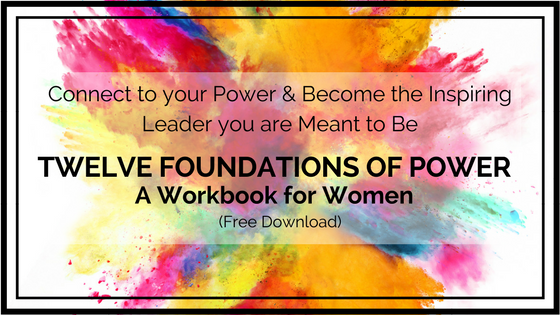The beauty of the human body is that it is designed to work best with gravity. Counter-intuitively, it is actually in learning to feel our weight into the ground that we find the most ease, length and height through our bodies. By learning to feel and trust the ground under us we can feel better and exude that feeling of grounded solidity - the basis of confidence - to the world around us. Feel it for yourself - try this:
You Are How You Move
Next time you are in a busy public place take a look around you.
Notice people's bodies as they walk by, talking with their friends, looking at their phones or rushing to get somewhere. What do you see? Can you see how what people are thinking and feeling is broadcast through how they move and hold themselves?
'Oh shit, I'm going to be late!' OR '...I don't know about this...' OR 'I'm exhausted!' OR 'I'm beautiful and I know it.'
Our physical presence says so much about who we are. When we make this conscious, we have the power not only to influence how we are perceived but also to genuinely shift how we feel and interact with the world from the inside out. A tall and well supported spine doesn't just tell the world that you are a vibrant and confident person, it tells your inner world the same thing.
So, next time you are rushing to work with your shoulders hunched forward and drawn up to your ears take a moment to breathe deep, relax your shoulders down your back and lengthen that spine of yours. Not only will it tell the world that you feel good about where and who you are, it will help you to genuinely feel that way.
Here's to enjoying being in skin!
Improve Your Posture, it's Easier that You Think! A 3-minute Exercise for a Healthier Spine
Believe it or not, it actually takes a lot more effort to slouch than it does to maintain a straight* spine. The human skeleton is built to be vertical. That's right, the inertia we feel to shift our posture for the better is nothing other than bad habits dying hard.
The key to understanding and putting this into practice lies in sensing the head on the top of the spine. When the skull is resting centred and relaxed on the top of the spine, its weight, held in place by a ligament (connective tissue that connects bone to bone) that runs from the base of the back of the skull to your cerival spine (the bones that make up your neck), actually acts as a suspension system for the spine.
Put this into practice:
Stand (or sit) comfortably
Nod your head gently forward and back on the top of your spine. Start with a full range of motion, bringing the head as far forward to the chest as it will go and then lifting your chin to the ceiling and carefully allowing your head to tilt back.
Inhale and exhale deeply and allow any tension in your neck and head to melt away as you do this.
Gradually make this movment smaller and smaller. Bring awareness to the upper bones of your neck, see if you can sense the topmost joint between the skull and the spine and the weight of the head as it rocks incrementally forward and back.
Allow the head to come to a resting point, on the top of your spine. Notice the ease with which it can balance there and the lift it offers the rest of your spine when relaxed in place.
*A healthy spine is actually quite far from a straight line. Good posture consists of, if you're looking at a body sideways, a luscious S curve; curving towards the front of your body in your cervical spine (neck), towards the back of your body throughout your ribcage (thoracic spine) and then again towards the front of your body in your lumbar (lower back) spine.
The Key to Transformation: "Let it be there, let it change"
Over the course of the last year, I have had the great honour of working with world renowned, Canadian dance artist Margie Gillis. When it comes to experiential wisdom of the body in motion, I have yet to meet anyone with a more in depth, sophisticated or compassionate understanding than she.
Margie has a wealth of adages that she uses during her classes to guide, suggest and support her students into deeper contact with their own embodied experience. One of these that stands out in my experience as a foundation for accessing transformation through movement is:
“Let it be there, let it change”
So often we feel that we have to make change happen. We force ourselves into the gym or to run harder and further. Though the assertion of will is important and there is a time for pushing ourselves, we need to understand that depth healing and transformation doesn't happen through anticipation and pushing for the future; what it takes is a full and complete recognition of the present moment. When we are fully present with and for what is, whatever we are experiencing moves naturally through our system, keeping the system in a state of healthful flux and allowing fresh experience to emerge.
To experiment with this in your own life, next time you are in an 'unpleasant' state (ex: irritated, angry, upset), try the following steps and take note of what happens for you:
1) Take a moment to draw your awareness away from any outer distractions and into your own experience. This may mean leaving the room and finding a quiet space to be alone and with practice can be done almost anywhere (bathrooms can serve as great 'halfway houses'!).
2) Place your hands on your own body and genuinely ask yourself, “what am I experiencing right now?”
2) Take note of what you feel in your body. Try to avoid putting a word label on anything too quickly, just breathe deep and invite whatever is happening to be there.
3) With the statement “let it be there, let it change” in your awareness, take a few deep breaths. Continue to experience your feelings as sensations as if you were listening to a song or piece of music that you love.
4) Once you've noticed that the quality of your experience has shifted, take a final breath and return to whatever you were doing.
Note: Personally I find this exercise most useful not for the big upsets but when I feel just subtlely 'off'. For example, I'm in the grocery store and notice that I am slightly agitated, or on my computer and notice that there's an inertia and heaviness to the way that I'm working. These more subtle feelings are signs that I'm ignoring or glazing over a deeper message.
Make the Most of Your Time: 6 Fundamentals for Powerful Practice (Movement-based or Otherwise!):
Whether you are practicing Movement, Meditation or Metal-working, Yoga or Yiddish, these approaches will help you get the most out of your time:
Intention: Name and envision your goal. Get as many senses involved and make the contact with the desired outcome as rich as possible.
- It's not personal: In the words of my teacher Doug Duncan Sensei,"It's not personal, even when it's personal." We can notice so much more and transform so much more effortlessly when we can experience the phenomena of our existence not as 'me' or 'mine' but as the incredible dance of the Universe. Can we be fully present for whatever is occurring while not taking it personally?
- Be specific: Know and name what it is you are practicing. Examples from a movement practice might be: feeling my weight into the ground or keeping my awareness in my hips as I move. This then gives me a clear focal point for the duration of my practice session
- Stay Curious: What is present IS the Path. Whether we're getting what we don't want or not getting what we do want, it can be easy to feel that the current scenario is somehow wrong. The key to powerful practice is staying attentive in the present moment. This is only possible when we allow whatever is showing up to be there. Cultivating an attitude of curiosity can be an easy way to do this.
- Remember to Reflect: Allocate and take the time to do a review of your period of practice. Speaking key moments out-loud to someone else or writing things down are two possible ways to do this. It can sometimes be hard to feel like this time is worthwhile, after all, “wouldn't I benefit more from five more minutes of actual practice?”. In actual fact however, a review has the power to exponentiate the impact of your practice time, bringing back to mind critical insights, solidifying, enhancing and integrating the learning that happened during the session.
- Share the Love: Connect the benefit of the time you have just spent to the benefit of others. Recognize that an improvement in your own wellness and life ripples out to benefit others. Not only will this practice amplify the benefits you receive from your efforts, it makes the process a whole lot more joyful and fun.
These Foundational Steps come mostly from my experience with Buddhist Meditation practices. I have my beloved teachers: Doug Sensei and Catherine Sensei of Planet Dharma to thank for exposing me to the great wisdom held therein.


